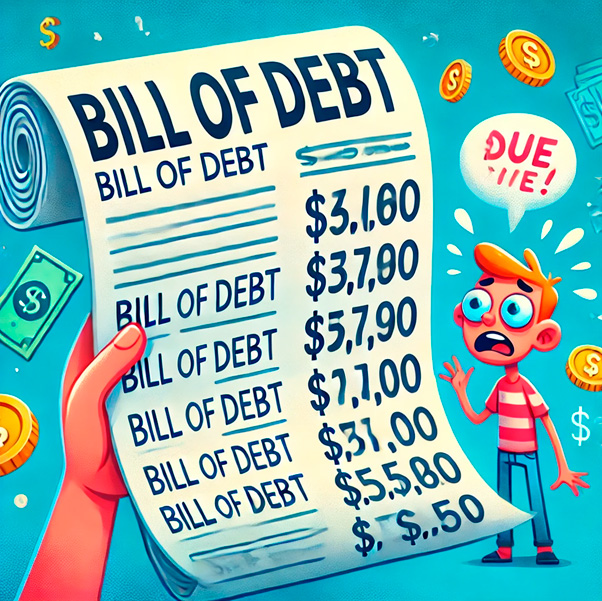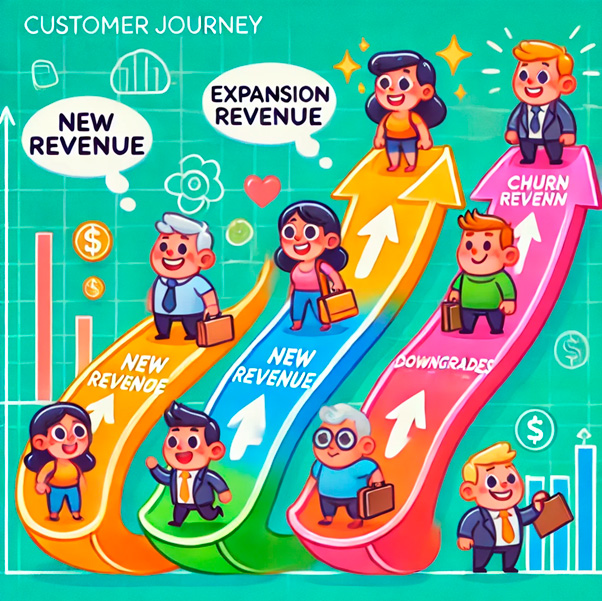Category: Glossary
-

Accounts Receivable
What Is Accounts Receivable (AR)? Accounts Receivable is money customers owe you for products or services they’ve received but haven’t paid for yet. It includes: Unpaid customer invoices Credit sales Payment commitments Outstanding bills 👆 By the way, an interesting fact: The concept of accounts receivable dates back to ancient Mesopotamia, where merchants used clay…
-

Net Revenue Retention (NRR)
What is Net Revenue Retention (NRR) in SaaS? Net Revenue Retention measures how much recurring revenue you keep from existing customers over time, including expansions, upgrades, downgrades, and cancellations. 👆 By the way, an interesting fact: High NRR companies (120%+) typically trade at 18-22x revenue multiples, while low NRR companies (less than 100%) trade at…
-

SaaS Gross Margin
What Is SaaS Gross Margin? Gross margin is what’s left of your revenue after paying the direct costs of delivering your software service. Think of it as your “profit per dollar of revenue” before other expenses. 💰 It includes: Revenue from subscriptions Minus hosting costs Minus customer support costs Minus other direct delivery costs 👆…
-

Free Cash Flow
What is Free Cash Flow? Free Cash Flow (FCF) is the actual cash a company has left after paying for everything it needs to maintain and grow its business. It shows: How much cash is actually available Ability to fund growth Financial flexibility True operational efficiency 👆 By the way, an interesting fact: Warren Buffett…
-

SaaS Rule of 40
What Is The Rule Of 40? The Rule of 40 is like a health score for SaaS companies. It suggests that a healthy software company’s growth rate plus profit margin should add up to 40% or more. Think of it as a balancing act between growth and profitability. You might be: Growing fast with lower…
-

SaaS Magic Number
What is the SaaS Magic Number? The SaaS Magic Number tells you how efficiently you’re turning your sales and marketing spending into revenue. It answers the question: “For every dollar we spend on sales and marketing, how much new recurring revenue do we generate?” How to Calculate the SaaS Magic Number The Formula for SaaS…
-

SaaS Quick Ratio
What is SaaS Quick Ratio? SaaS Quick Ratio measures how much a company’s revenue is growing compared to its losses. It answers the question: “For every dollar of lost revenue, how many dollars of new revenue are we generating?” How to Calculate SaaS Quick Ratio? The Formula for SaaS Quick Ratio SaaS Quick Ratio =…
-

Upsell Rate
What is Upsell Rate? Upsell rate measures how successfully you convince existing customers to buy more expensive products or upgrades. It shows: Effectiveness of upgrade offers Customer satisfaction with current products Growth potential from existing customers Success of your value ladder 👆 By the way, an interesting fact: Studies show that the probability of selling…
-

Renewal Rate
What is Customer Renewal Rate? Renewal rate is the percentage of customers who extend their subscriptions or contracts when they expire. It tells you: How many customers actively choose to stay The strength of your customer relationships The effectiveness of your product/service Customer satisfaction levels 👆 By the way, an interesting fact: Studies show that…
-

CAC Payback Period
What Is CAC Payback Period? CAC Payback Period is the time it takes your SaaS company to recover the cost of acquiring a customer. It answers the key question: “How many months until we recover our customer acquisition costs?” How to Calculate CAC Payback Period Formula for CAC Payback Period CAC Payback Period = CAC /…
-

Startup
What Is a Startup? A startup is a young company with big dreams! 🌟 It’s typically a business that’s just beginning its journey, aiming to solve a problem in a new way or shake up an existing market. Key Characteristics of a Startup Innovation-focused Rapid growth potential Scalable business model Often tech-oriented Usually seeking funding Fun…
-

Inventory
What Is Inventory? Inventory is everything a business has on hand to sell or use in making products. Think of it as your business’s “stuff” – all the goods, materials, and products you need to keep your operation running. 🏭 Fun Fact: The word “inventory” comes from the Latin “inventarium,” meaning “a list of…